If you want to make reliable temperature measurements, you need to choose the right temperature sensor for your application. Thermocouples, thermistors, platinum resistance (RTD) and temperature ICs are the most commonly used temperature sensors in testing. Temperature measurement principle: Two different conductors (called thermocouple wires or hot electrodes) are connected at both ends into a loop. When the temperature of the joint is different, an electromotive force is generated in the loop. This phenomenon is called a thermoelectric effect, and this electromotive force It is called thermoelectromotive force. Thermocouples use this principle for temperature measurement. The one that is directly used to measure the temperature of the medium is called the working end (also called the measuring end), the other end is called the cold end (also called the compensating end); the cold end and the display The meter is connected to display the thermoelectromotive force generated by the thermocouple. The temperature of the measured medium can be obtained by querying the thermocouple indexing table. Thermocouples are the most commonly used sensors for temperature measurement. Its main benefits are a wide temperature range and adapt to a variety of atmospheric conditions, and it is strong, low price, no power supply, especially the cheapest. The thermocouple consists of two different metal wires (metal A and metal B) connected at one end, as shown in Figure 2. When one end of the thermocouple is heated, there is a potential difference in the thermocouple circuit. The measured potential difference can be used to calculate the temperature. In short, thermocouples are the simplest and most versatile temperature sensor, but thermocouples are not suitable for high precision applications. Commonly used thermocouples can be continuously measured from -50 to +1600 °C. Some special thermocouples can measure -269 °C (such as gold, iron and nickel), up to +2800 °C (such as tungsten-bismuth). Thermistor (1) Principle of temperature measurement: The thermal resistance is measured based on the thermal effect of the resistance, that is, the resistance of the resistor changes with temperature. Therefore, as long as the resistance change of the temperature sensitive resistor is measured, the temperature can be measured. At present, there are mainly two types of metal thermal resistance and semiconductor thermistor. The resistance value and temperature of the metal thermal resistance can generally be expressed by the following approximate relationship, namely: Where Rt is the resistance at temperature t; Rt0 is the corresponding resistance value at temperature t0 (usually t0 = 0 °C); α is the temperature coefficient. The relationship between the resistance and temperature of a semiconductor thermistor is: Where Rt is the resistance at a temperature of t; A, B depends on the constant of the structure of the semiconductor material. Thermistors are made of semiconductor materials, mostly with a negative temperature coefficient, ie the resistance decreases with increasing temperature. Temperature changes cause large resistance changes, so it is the most sensitive temperature sensor. However, the linearity of the thermistor is extremely poor and has a lot to do with the production process. Manufacturers cannot give standardized thermistor curves. The thermistor is very small and responds quickly to temperature changes. But the thermistor needs to use a current source, and its small size makes it extremely sensitive to self-heating errors. The thermistor measures absolute temperature on two lines and has good accuracy, but it is more expensive than the thermocouple, and the measurable temperature range is smaller than the thermocouple. A commonly used thermistor has a resistance of 5 kΩ at 25 ° C, and a temperature change of 1 ° C causes a resistance change of 200 Ω. Note that a 10Ω lead resistance only causes a negligible 0.05°C error. It is ideal for current control applications that require fast and sensitive temperature measurements. Small size is advantageous for applications with space requirements, but care must be taken to prevent self-heating errors. Measurement technique The small size of the thermistor is an advantage, it can be stabilized quickly and does not cause a thermal load. However, it is also very weak, and large currents cause self-heating. Since the thermistor is a resistive device, any current source will generate heat due to its power. The power is equal to the product of the square of the current and the resistance. Therefore use a small current source. If the thermistor is exposed to high heat, it will cause permanent damage. Resistance temperature sensor Like the thermistor, the platinum resistance temperature sensor (RTD) is a thermally sensitive resistor made of platinum. When calculating the RTD temperature by measuring the voltage, the digital multimeter measures the voltage generated by the current source with a known current source. This voltage is the voltage drop across the two leads (Vlead) plus the voltage on the RTD (Vtemp). For example, a commonly used RTD has a resistance of 100 Ω and produces only a resistance change of 0.385 Ω per 1 °C. If each lead has a 10 Ω resistor, it will cause a measurement error of 26 ° C, which is unacceptable. Therefore, the 4-wire ohms measurement should be performed on the RTD. The RTD is the most accurate and stable temperature sensor with linearity superior to thermocouples and thermistors. But the RTD is the most expensive temperature sensor. Therefore, RTDs are best suited for applications where accuracy is critical and speed and price are less critical. Measurement technique Using a 5 mA current source results in a temperature measurement error of 2.5 °C due to self-heating. Therefore, it is extremely important to minimize the self-heating error. 4-wire measurements are more accurate, but require twice the lead and twice the switch. Temperature IC A temperature integrated circuit (IC) is a digital temperature sensor that has a very linear voltage, current, and temperature relationship. Some IC sensors even have a digital output that represents temperature and can be read directly by the microprocessor. There are two types of temperature ICs with the following temperature relationships: Voltage IC: 10 mV/K. Current IC: 1μA/K. The disadvantage of temperature ICs is that the temperature range is very limited, and there are also problems of self-heating, weakness, and the need for an external power source. In summary, temperature ICs provide a method of producing an easy-to-read reading that is proportional to temperature. It's cheap, but it's also limited by configuration and speed. Measurement technique The temperature IC is bulky, so it changes slowly and can cause thermal loads. Use temperature IC for applications close to room temperature. This is its most popular application. Although the measurement range is limited, it can also measure the high temperature of 150 °C. Instance The LM135\235\335 series is a high-precision and easily calibrated integrated temperature sensor manufactured by National Semiconductor Corporation (NS). It is a voltage output type temperature sensor with similar operating characteristics to Zener regulators. The device's sensitivity is 10mV/K, with a dynamic impedance of less than 1Ω, operating current range from 400μA to 5mA, accuracy of 1°C, LM135 temperature range of -55°C to +150°C, and LM235 temperature range of -40°C ~ +125 ° C, LM335 is -40 ° C ~ +100 ° C. The package forms are TO-46, TO-92, SO-8. The device is widely used in temperature measurement, temperature difference measurement and temperature compensation systems. See LM135, 235, 335.pdf for details. AD590 is a current output type temperature sensor of American Analog Devices. The power supply voltage range is 3~30V. It can withstand 44V forward voltage and 20V reverse voltage. The temperature range is -55°C~+150°C, and the output current is 223μA~ 423μA, output current change 1μA is equivalent to 1°C temperature change, maximum nonlinear error is ±0.3°C, response time is only 20μs, repeatability error is as low as ±0.05°C, power consumption is about 2mW, and the output current signal transmission distance can be Up to 1km or more, as a high-resistance current source, up to 20MΩ, so it does not have to consider the error caused by the additional resistance introduced by the selection switch or CMOS multiplexer, suitable for multi-point temperature measurement and long-distance temperature measurement. control. See AD590.pdf for details. Digital temperature sensor: (1) Principle: The sensitive component, the A/D conversion unit, the memory, and the like are integrated on one chip, and the digital signal reflecting the measured temperature is directly output, which is convenient to use, but the response speed is slow (on the order of 100 ms). (2) Example: DS18B20 is the world's first film to support "first-line bus" produced by Dallas Semiconductor. Digital temperature sensor with interface, power supply voltage range is 3~5.5V, temperature range is -55°C~+125°C, programmable 9~12 bit resolution, corresponding resolution temperature is 0.5°C, 0.25°C , 0.125 ° C and 0.0625 ° C, the factory default is 12 bits, the temperature value is converted to a number within 750ms at 12-bit resolution. Experienced board designers will use the most appropriate solution based on the final product requirements. Table 1 shows the relative advantages/disadvantages of each temperature sensor. Non-contact temperature sensor Sensor model Temperature range typical application OTP-538F2S -40 to + 500 °C Medicine (ear thermometer), family facilities (hair dryer, etc.) TS105-1 -20 to 100 ° C (accuracy: -0.45 ± 0.08 % / K) Infrared thermometer, non-contact temperature measurement, moving object temperature measurement TS105-2 -20 to 100 ° C Thermometer, microwave oven, indoor air conditioner, pyrometer, automotive environmental control TS118-1 Related to the processing circuit (normal -20 ~ 300 °C ) Non-contact temperature measurement, moving object temperature measurement, temperature control, fire alarm TS118-3 Related to the processing circuit (normal -20 ~ 300 °C ) Contactless temperature measurement, temperature control, fire alarm, climate control system TSEV01 0 to 300 ° C (accuracy: 0.1 ° C) Family, medical, car, safety, industrial Advantages of a non-contact temperature sensor: 1. Since there is no direct contact with the measured medium, it is not necessary to consider some physical properties of the contacted medium, such as adhesion, corrosion, wear, etc., which will not cause damage to the sensor. Contact search is faced with an additional solution to these problems. 2. Limited by space. For some measured targets that are far away from each other, the temperature can be measured from a distance. 3. Measurements can be made for targets that are inconvenient to measure, such as rotating machinery, moving targets, etc. Disadvantages of non-contact temperature sensors: 1. It is easily interfered by environmental factors, such as thermal radiation. 2. It is not easy to achieve long-term continuous measurement of the target. The MLX90620 far-infrared sensor uses a non-contact temperature measurement technology and is a cost-effective thermal imaging solution. The 16 x 4 far infrared thermopile sensor array covers a temperature range of -20 ° C to 300 ° C and generates a real-time calorific value map of the target area. With it, you can scan the target area without using a single point sensor or an expensive microbolometer. The MLX90620 far-infrared sensor captures 64 two-dimensional pixel images, greatly simplifying the integrated thermal imaging system, thereby maintaining the price range acceptable for high-volume, low-cost applications. The array integrates an amplifier and an analog-to-digital converter in each pixel to provide a frame rate of 0.5-64 Hz. Accuracy of ±1.5 °C is maintained when used in the temperature range of 0 °C - 50 °C. Available in 60o x 15o and 40o x 10o fields of view. The MLX90620 far-infrared sensor has a high-speed I2C-compatible digital interface and uses a synchronous trigger mode with a control unit that can be used alone or in combination with multiple devices to achieve higher image resolution. Far-infrared imaging is becoming a very important technology in the automotive industry to improve the safety of automobiles. The MLX90620 far-infrared sensor can be used in areas such as pedestrian detection, close-range blind spot detection and occupancy classification. The multi-point accurate thermal image provided by this sensor array also helps intelligent building control systems to perform temperature measurements and occupancy statistics. In a domestic environment, the array is able to make microwave ovens and other conventional stoves more intelligent. The focus on energy efficiency has driven the market's growing demand for thermal imaging equipment. The thermal imaging device detects the heat loss of the room and graphically indicates where improvements are needed. The MLX90620 Far Infrared Sensor is ideal for both home and commercial low resolution thermal imaging cameras to meet the needs of each of these tasks. In commercial environments, this sensor opens up new opportunities for intelligent program control and thermal detection. Finally, it can also be used as a smart fire detection sensor to help firefighters and other emergency services personnel discover hot spots, detect evacuation routes, and conceal fire sources.
Refrigerator Condenser Evaporator
1. Main material: Condenser Evaporator,Evaporator And Condenser,Refrigerator Evaporator,Compressor Condenser Evaporator FOSHAN SHUNDE JUNSHENG ELECTRICAL APPLIANCES CO.,LTD. , https://www.junshengcondenser.com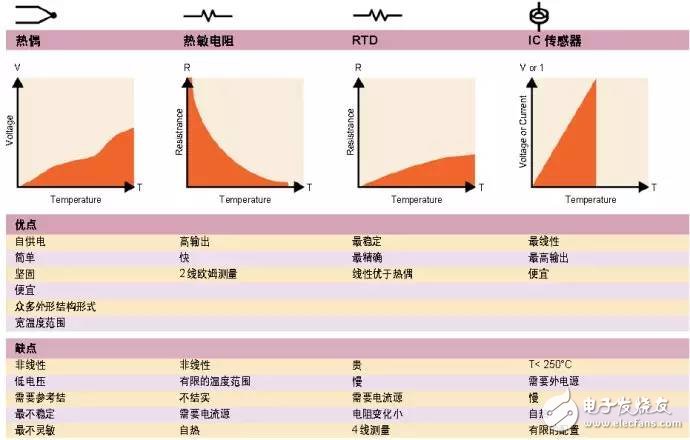
Figure 1 Advantages and disadvantages of various popular temperature sensors Thermocouple 
Figure 2 Thermocouple circuit diagram (left) and thermocouple voltage - temperature curve example (right)
Since the voltage and temperature are non-linear, a second measurement of the reference temperature (Tref) is required and the voltage-temperature transformation is processed inside the instrument using test equipment software and/or hardware to ultimately obtain the thermocouple temperature (Tx). Both the Agilent 34970A and 34980A dataloggers have built-in measurement capabilities. 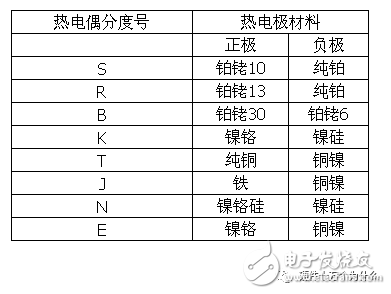

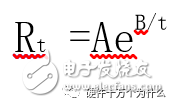

Figure 3 Thermistor circuit diagram 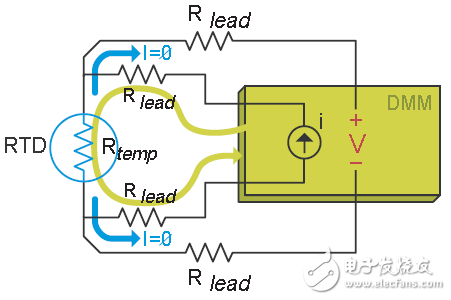
Figure 4 RTD requires 4-wire measurement 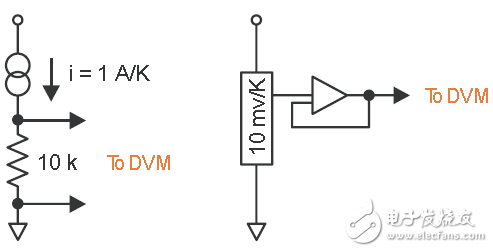
Figure 6 Current sensor (left) and voltage sensor (right)
The output of the temperature IC is a very linear voltage ∕ °C. What is actually produced is the voltage ∕Kelvin, so the 1°C output at room temperature is about 3V. The temperature IC requires an external power supply. Usually the temperature IC is embedded in the circuit and not used for probing. 
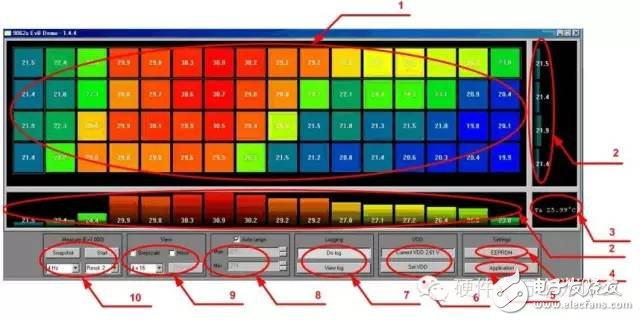
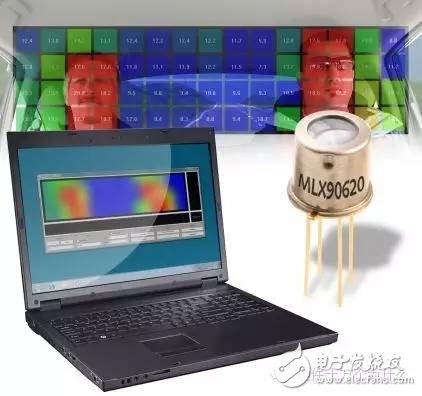
Rolling welded steel pipe: OD 4.76 to 8
Wall thickness:0.5- 0.7
Low carbon steel wire OD 1.0 to 1.8
Bracket:
Steel plate (SPCC) thickness: 0.6 to 1.5
Steel plate (SPCC) thickness: 0.3 to 0.4
2.Structure:
Flat type of Wire On Tube Condenser used at the back
Bended or spiral type of wire on tube condenser used at the bottom
Wrapped type of tube embedded on plate
3.Technical ability:
Wire pitch: ≥ 5mm
4.Performance:
Surface with electrophoresis coating to prevent the corrosion
Inner cleanliness can meet the requirements of CFC and R134a cooling system
Can satisfy the cooling capability requirements